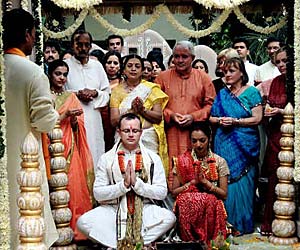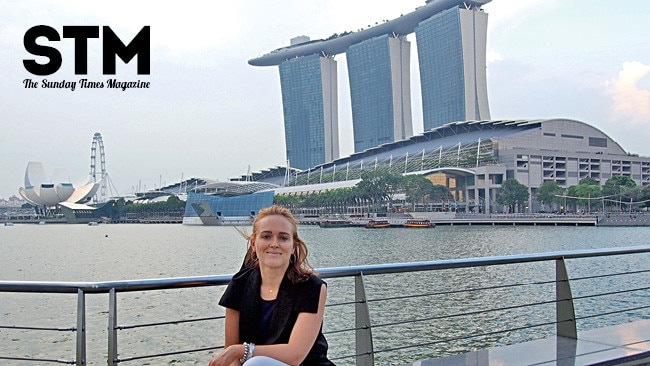Ritual key to Hindu wedding
THE third greatest passion of Indians around the world is the wedding, bettered only by Bollywood and cricket.

THE third greatest passion of Indians around the world is the wedding, bettered only by Bollywood and cricket.
Hit the streets of Delhi, Jaipur or any other major Indian city in the November to March wedding season and you might well think Bollywood and cricket fade into the shadows.
A Westerner's appreciation for Indian weddings is usually kept to the confines of a passing bus, or a gawk from the perimeter as Indians play out a ritual dating back to the Vedas or ancient Indian scriptures.
Today a Westerner among the wedding party is no longer the spectacle it once was.
In some cases, an Indian informed us on our arrival, Westerners are exchanging their traditions for the divine rituals and splendour of a Hindu wedding ceremony.
A friend's marriage to his Indian girlfriend marked an opportunity to uncover the mystique and growing appeal of a Hindu wedding ceremony, typically held over three days.
Our arrival before the start of formal proceedings provided an opportunity to buy traditional Indian attire for the coming days, an initiative praised by our Indian hosts.
For the males this comprises kurtas – a knee-length top over drawstring cotton pants. Kurtas range in price from $20 for a casual festive look to $120 for the bling kurta complete with gold lacing, knee-length shoulder scarf and matching shoes.
For the females, a range of saris promising to expose stomachs or dazzle with heavy embroidery ranges from $35 up to $200.
Our style selections were more or less approved by our friendly hostess, Shilva, a friend of the bride's father who took the day off from lecturing at a Bombay university to escort us.
With dress certified, we excitedly welcomed the first ceremony, an Indian classical dance performance held on the evening of the first day.
Traditional Indian dance is a fine interweave of myth and legend with melodic sound and gesticulating movements on behalf of the females who act as the storytellers.
Each story is a message to the audience exhorting them to live their lives piously, to be righteous and to be prosperous.
The bride performed a dance alone, captivating her husband-to-be.
The second day starts with the Pithi function held at the family house of the bride about noon.
Here the bride and groom are painted from head to toe in yellow paste by family and friends, with the intention of beautifying them for the formal ceremony the following day.
Included in this spectacle of paste and laughter is the pinning of a red dot with rice to the forehead. This represents the third eye, enriching foresight for the journey ahead.
Much to our delight, the occasion is followed with a feast.
The Garba function, the pinnacle of the pre-ceremony celebrations, is held that night. Set in a purpose-built amphitheatre which also plays host to the formal ceremony, the Garba is a night to relax and reflect among relatives and friends with food and collective dance.
The amphitheatre serves as an open-air hall complete with stage, facing seating area, fine catering, a carpet of welcoming grass and the occasional tree.
The bride's mother opened the night with a speech before the eating and communal dancing.
The simplicity and frivolity of communal Indian dancing persuaded the least likely of contenders.
The formal wedding ceremony is held some time after noon on the third and final day. As members of the groom's party, we were asked to arrive early in our formal kurtas to escort the groom for his entry to the amphitheatre.
In support we rallied behind him, only to be faced by the tide of the bride's party headed by her mother. As we came to learn, her role was to touch the groom's nose, thereby embedding him with bad luck.
Our role was to circumvent her friendly and playful advance, setting the scene for a warm and atmospheric two-hour ceremony.
The ceremony comprises a number of Hindu sacraments performed under a straw-covered temple decorated with flowers. Sacraments are sacred rites performed to prepare the bride and groom for a new phase of life.
They involve among other things, the circling of fire four times by bride and groom to represent the four goals of life (duty, wealth, desire, salvation) and the adornment of red powder on the crest of the bride's head. The bride and groom followed the instructions of the priest, with the support of their parents sitting alongside.
With the formal ceremony over, the groom faced the last of his marriage quests – the bribing of the bride's sisters and female cousins to enable an exit from the stage, with the females eventually relinquishing their control of the stage exit and the groom's shoes for a moderate sum.
Certainly cricket and Bollywood could not match the majesty and splendour of a Hindu wedding.



